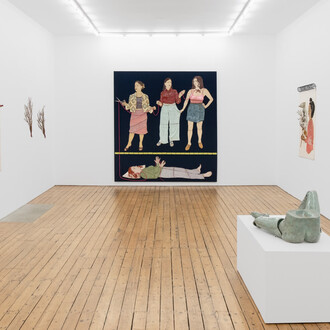Predominantly contemporary art is issue-based, driven by conceptual strategies and aimed at intervening within the contemporary social world. It communicates within a culture of communication. There is, however, another way.
Some artists do not accept the burden of representation in art and prefer to escape the responsibilities of communication for the freedom of play and have turned their back on the conceptual in pursuit of the image and imagination. Maurice Blanchot describes such artists as “exiles from life in the illusory world of images”. The three artists in this exhibition are, in different ways, such exiles refusing a conceptual or instrumental connection with images for personal reverie and fantasy.
No one embodies this withdrawal from the conceptual world into the world of images more extremely than Susan Te Kahurangi King, who has refused to speak or communicate in any other way than through her drawings since the age of ten. In the fifty years since then there has been a continuous outpouring of drawings. Derived initially from Disney graphics they evolved into an abstract language of her own.
Kushana Bush’s sense of separation from mainstream culture is less pathological and unambiguous. From her geographically remote home in New Zealand, a sense of exile is the given and essential part of her relationship with the images which inspire her work. Out of the distance of communication, from images of images, she has created her own mythic universe – a parallel world of cultural mutations. It seems to take a distance from the image to free it to its full imaginary potential. Interestingly none of the exiles in his show have made this necessary separation entirely voluntarily.
David Kettner’s seclusion from the world may not be chosen either but, as with Bush and King, it is a separation which has set him free to play with the image and probe the limits of his imagination within the necessarily limited parameters of a (collage) game of his own invention. There is a strongly regressive element in this retreat into the image. All attempts to throw off the shackles of conceptual thought and instrumentality to engage freely with the image involve a desire to re-enter the world of the child. Kettner’s collages are deliberate transgressions of this threshold between the world of the adult and child. “If childhood fascinates, it is because it is the moment of fascination”.* And it is a fascination for the image which these three artists have in common.
















